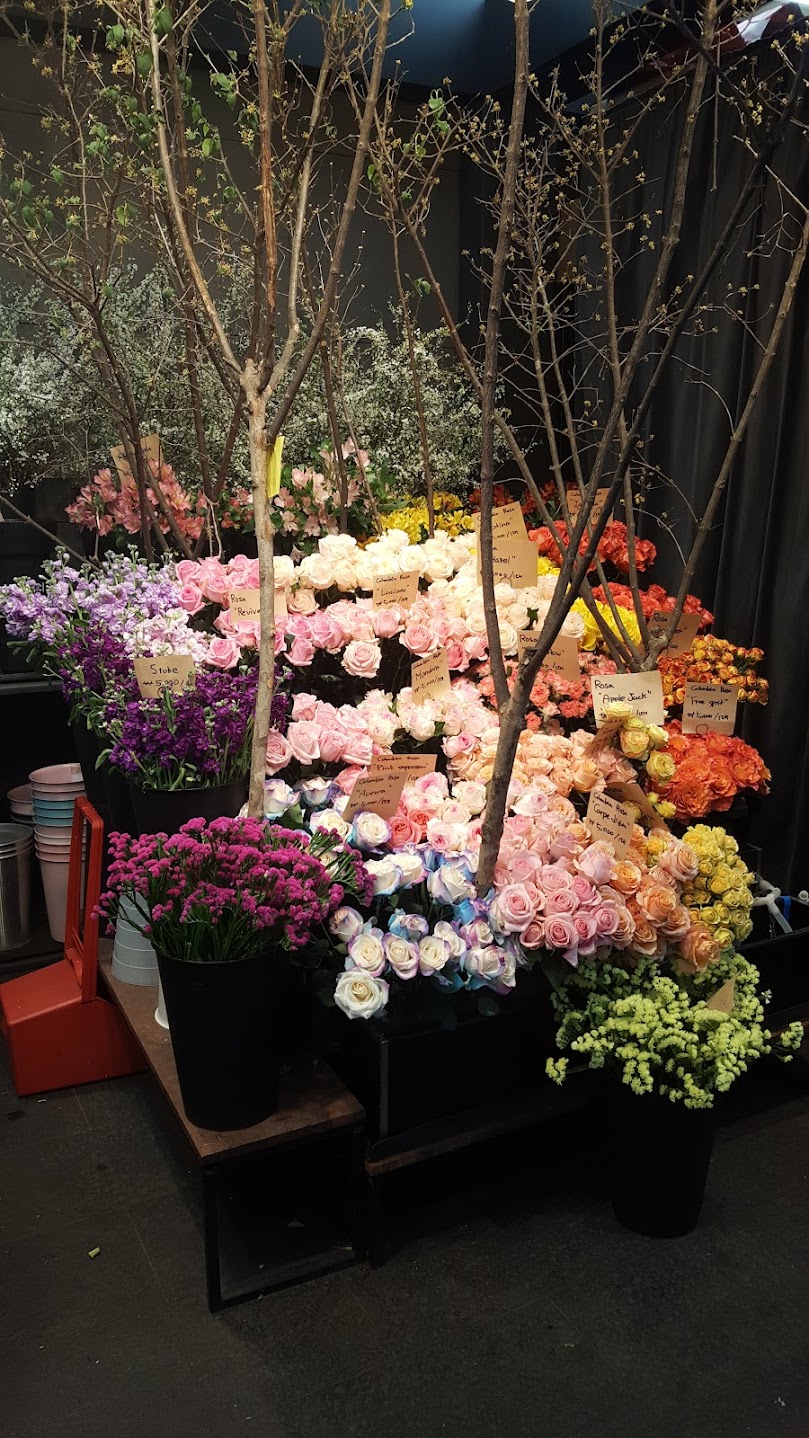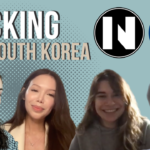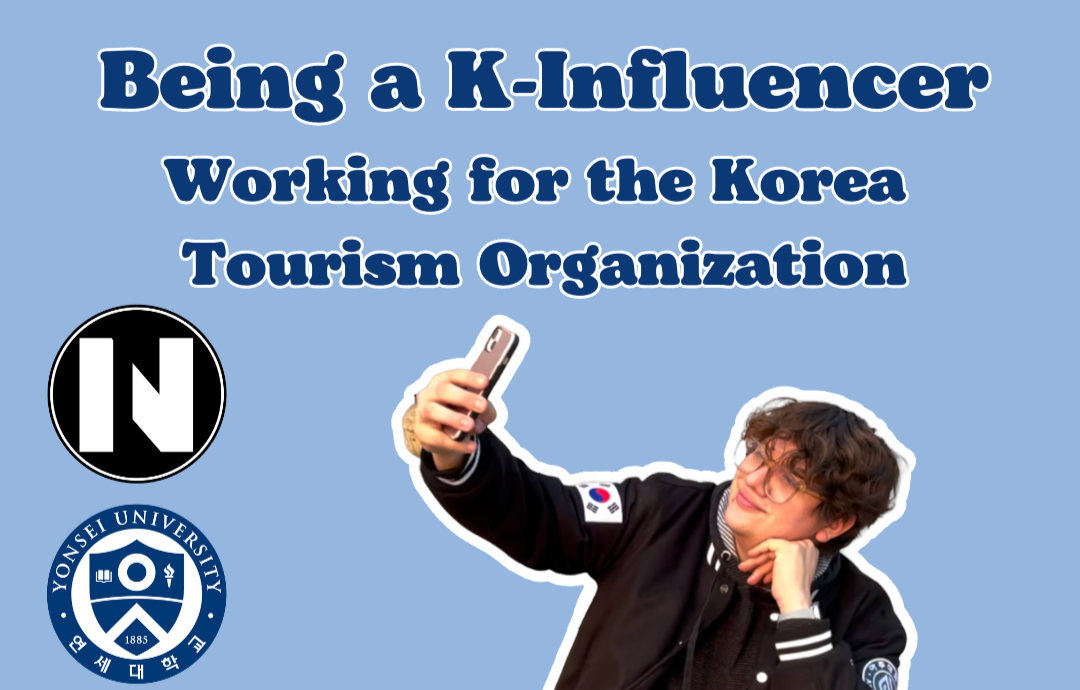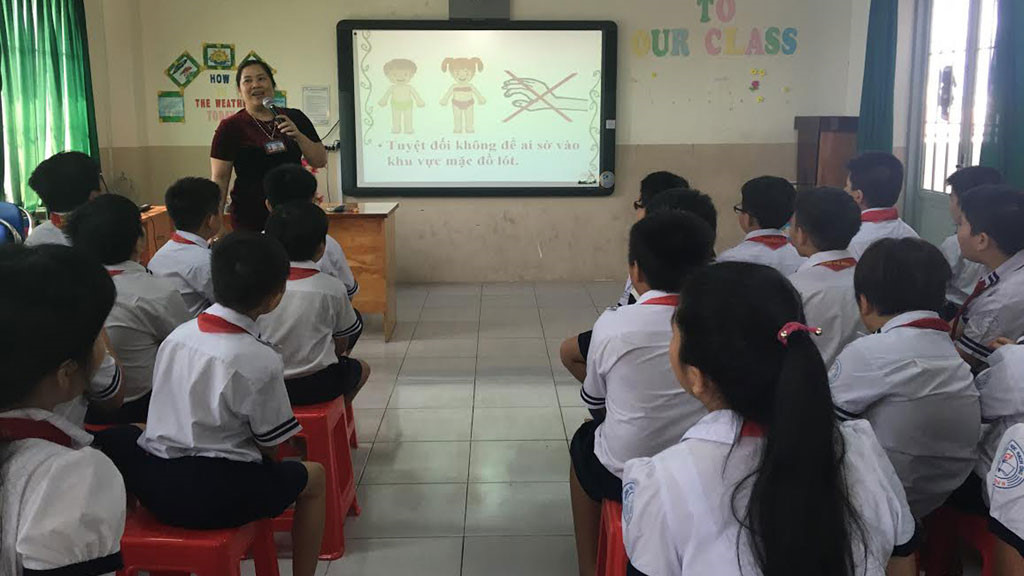One of the first things I noticed in Seoul was the flowers.
When I left quarantine, I was thrilled that a bakery had mini bouquets along with their usual products. In such a metropolitan area as the capital of South Korea, seeing fresh flowers is a breath of fresh air and a riot of color against a city backdrop.
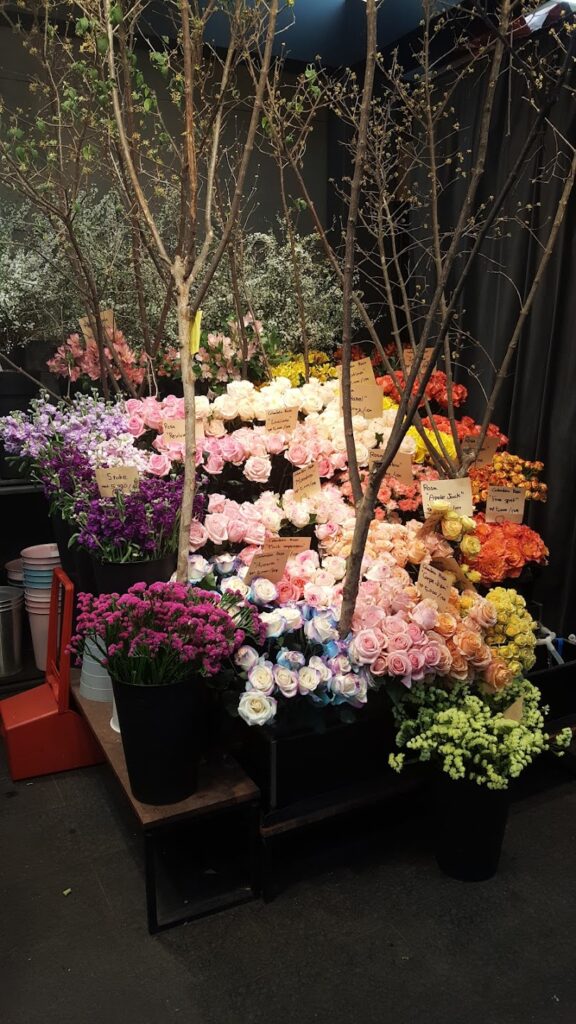
Back home in the United States and more specifically, in smaller Midwest areas, it wasn’t as common to see this many flowers. If we saw flowers, it was most likely in a larger store like CVS or Walmart, which were also grocery stores and pharmacies. Seeing flowers was something that required intent and wasn’t something that just happened as you walked around. But in Seoul, flowers were something that you stumbled upon, pleasant surprises.
In Seoul, I took pictures whenever I saw a flower shop, expecting it to be an anomaly. But it wasn’t; there were flowers in the subway stations, along the road in stalls overflowing with curated bursts of color, and in compact stores next to a string of other equally compact stores.
Was there a culture I wasn’t aware of? A special value of flowers, perhaps? Perhaps I could coax out a story from this.
So I began to ask questions. To start, I visited Daisy, a flower shop in a more residential area near Ewha subway station.
Besides the bright flowers and arrangements outside, the owner seemed to have fun naming her products, most notably a bouquet that she named “$10 happiness.”
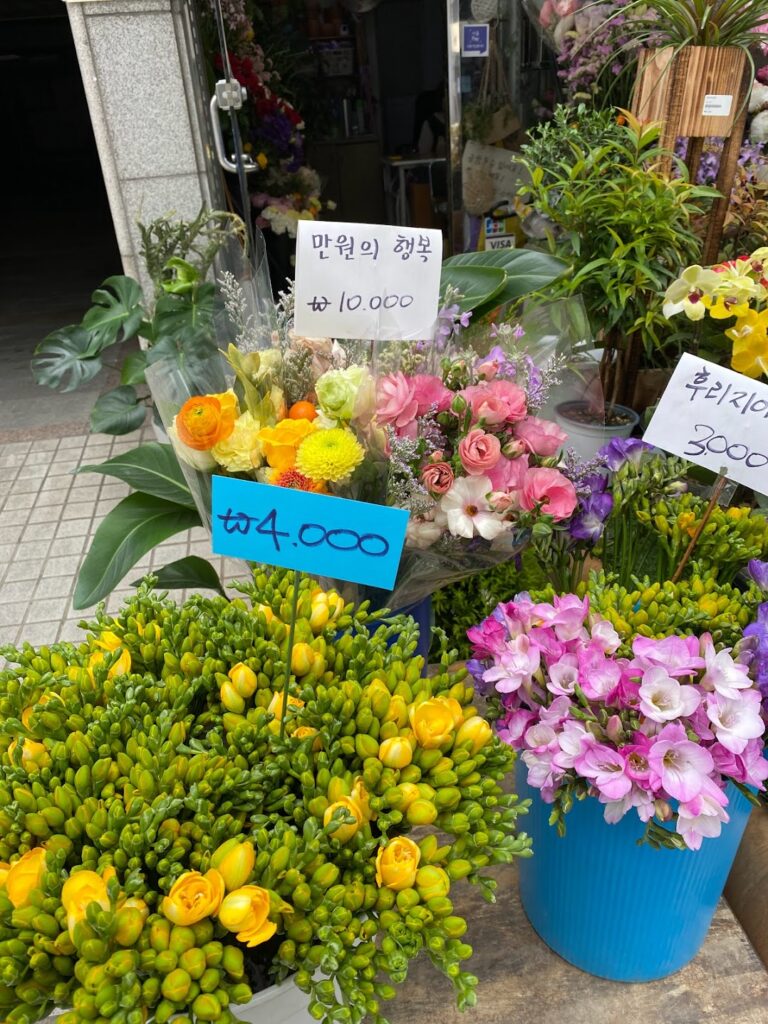
The owner opened the store in 2000 and has been steadily running her business since. During the 22 years that she’s been in business, the scenery of flower shops around her changed. She admitted that at first, there wasn’t as much interest in flowers but that there was also a steady increase. And when I asked her about why she thought that there were so many flower shops in the city, she simply said that the demand was high.
But at first listen, I misunderstood her.
She said a word I didn’t know but because I was both nervous and enamored with the “10,000 won happiness”, I guessed that the word meant something poetic and grand. And then she said “사려고 하는 사람 많으니까” to try to clarify the word.
The phrase she said could mean two different things. The verb used can sound like “to buy (사려고)” or “to live (살려고).” And because I already went into the interview thinking that there was some grand meaning to flowers, I interpreted it as “because there are many people who want to live” rather than the far simpler intended meaning: “because there are many people who want to buy.”
I only realized my mistranslation when I got home to listen back to the discussion and more importantly, to translate the word I didn’t know. The word she used wasn’t anything grand; it was the word for “demand.”
“Why do you think that there are so many flower shops in Seoul?”
“Demand.”
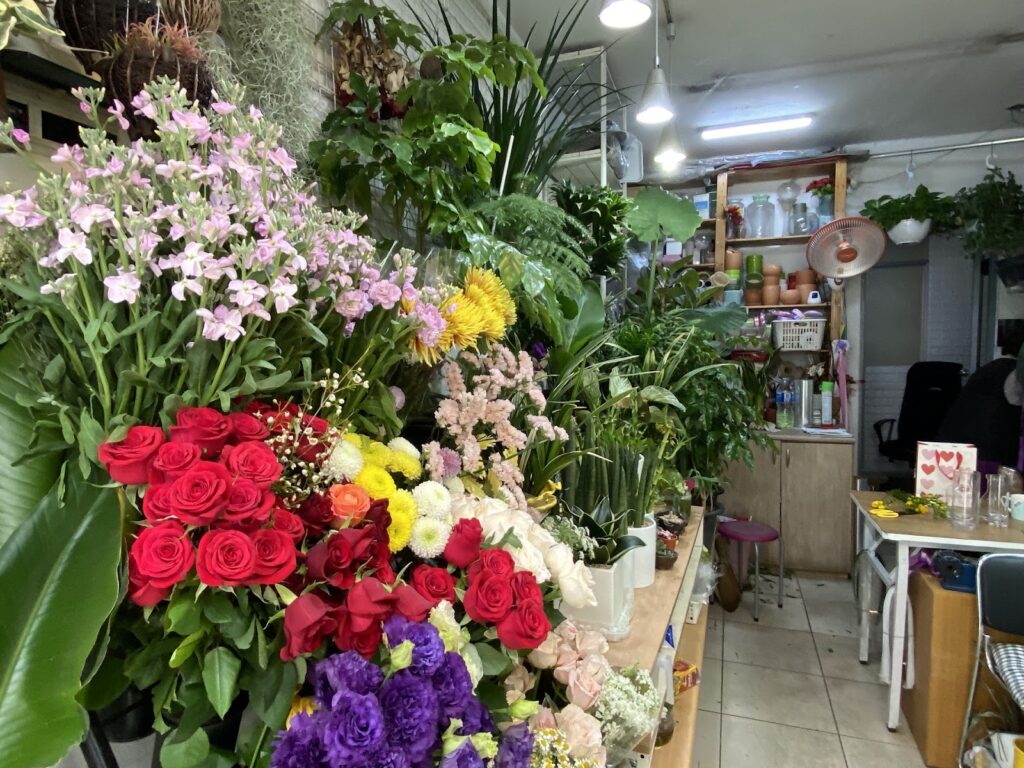
Still, perhaps there was something more. After all, that was one flower shop. I still wanted to talk to a flower stall, a flower spot in the subway, and a flower shop closer to a university. There was a story to uncover, I told myself.
And I found one, somewhat, as I did an internet search for “동네 꽃집”, or neighborhood flower shop. But it wasn’t what I was looking or hoping for.
I found articles about how the flower industry was struggling under COVID 19 as well as the existing structure to buy flowers. Articles about how the local flower shop was dying or being killed by harsh prices were the first that popped up, giving insight into both the pandemic’s impact on the industry as well as distribution issues. It was compelling but also something I couldn’t fully access with my current level of Korean.
But more than that, I wanted a more romantic angle on flower shops and their presence in the city. For something as aesthetically pleasing as flowers, wouldn’t it be more lovely to have some poetic meaning behind them?
So I stuck to my original plan. I found another local flower store called 한아름 꽃 (Han Areum Flowers), this time closer to Ewha University. I used the same questions I asked the owner of Daisy and hoped for something else.
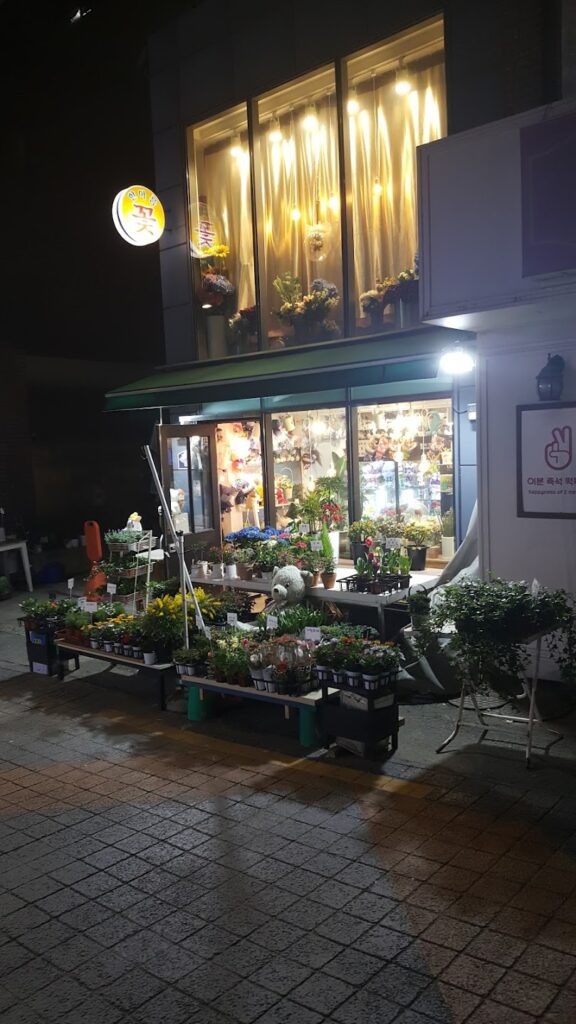
Han Areum Flowers opened in 1985 and used to enjoy and maximize its closeness to the campus before the pandemic. When it was key events like Teacher’s Day or graduation, business was booming. But nowadays due to the pandemic, there’s mostly regulars that come through and the random customer that wanders in whether allured by the display or out of necessity.
More importantly, when I asked the owner about her thoughts on the flower shops in the city, she said that it’s not that big of a deal. “Everywhere has flowers”, she said.
This made me pause and take a step back. Because she was right.
I awkwardly ended the conversation as a set of realizations hit me. One, that I never lived in a big city before, therefore the contrast could have been due to my suburban upbringing. Two, that I had gone into the conversation with rose colored glasses on, wanting a poetic reasoning for Seoul’s flower stores rather than the reality of running a flower shop during a pandemic. And three, that the story I wanted was far simpler than I thought.
At that moment, a customer came in and the owner excused herself to speak to him. She had a job to do.
I left the store with two small flower pots with mint and basil. Back home, I put them next to the flowers I bought from Daisy and let them be what they were: flowers, beautiful and someone’s way to make a living.
- “Our teachers deserve better”;Yonsei KLI Teacher Protests - June 30, 2022
- Translating Veganism into a Korean Context - June 9, 2022
- The Meaning Of Flowers - May 6, 2022

